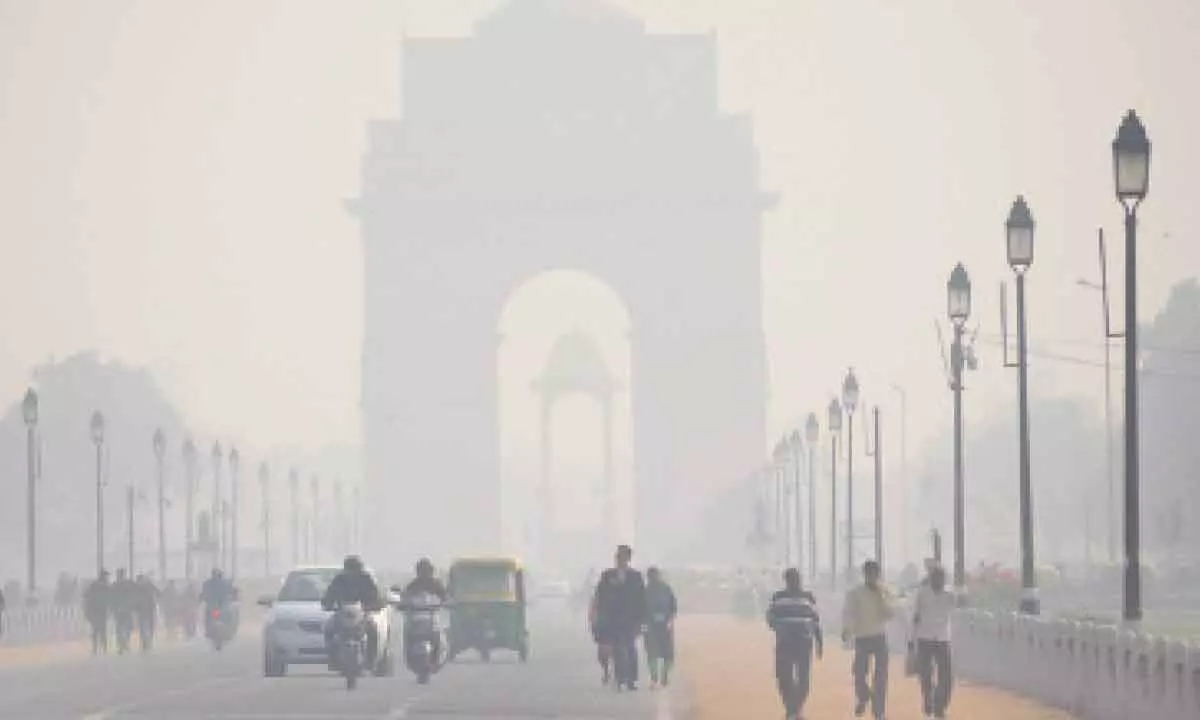Gasping for fresh air? Time to address the root-causes of winter smog crisis in north India
Only one thing is known: none of these patchwork solutions have worked in the past or will work in the future
image for illustrative purpose

Criminalising burning of stubble is not the solution. How can you penalise the farmer for doing exactly what he is being incentivised to do? Nothing is more profitable than growing wheat and rice in India because the government buys these two commodities. Ground water is over-exploited for paddy cultivation, mainly due to the free electricity supply since the 1990s.
Every November, the skies in North India turn grey, and the air quality goes from bad to toxic. Complaints of health issues ranging from respiratory problems to itchy eyes abound. Fierce disagreements break out between various state governments as they look to pass the buck.
The matter invariably winds up before the Supreme Court, and different patchwork solutions are seriously considered. These include restrictions on traffic (the so-called odd-even scheme), temporary stoppage of construction work, spraying of water to settle the dust and some out-of-the-box ideas like smog towers and cloud seeding. Only one thing is known: none of these patchwork solutions have worked in the past or will work in the future.
The poor air quality in winter in the National Capital Region (NCR) is a very well-studied problem, and the reasons for it are not obscure. The baseline air pollution level is terrible throughout the year because of excessive construction, industrial pollution, ever-increasing traffic and depletion of greenery. The problem worsens in November due to crop burning and Diwali. All these are a natural outcome of the policies followed by the government, which can actually be remedied if there is a political will to go about it in right earnest.
Let's start with the lowest hanging fruit, i.e., bursting of crackers for Diwali. There is no religious purpose behind the bursting of firecrackers. There is no centuries-old cultural tradition behind it either. Banning them outright would cause an economic burden on the Rs 6000 crore firecracker industry. In an economy of trillions, this is a small number.
Some people may miss bursting crackers on Diwali for a few years, but the vast majority would be relieved to be rid of the noise and air pollution. The Supreme Court and the National Green Tribunal (NGT) have advocated this for many years. Still, successive state and central governments have avoided strict implementation of these recommendations.
Crop burning is a more complex issue and its origins go back to the struggles to achieve food security. Punjab and Haryana shifted from their traditional crops (maize, pearl millet, pulses and oilseeds) to the wheat-paddy cultivation cycle during the Green Revolution years of the 1970s and 1980s. Adequate stocks of rice and wheat were essential for the food security for the country; therefore, neither the Centre nor the two states showed much concern for the sustainability of the resources. Paddy is harvested in November and wheat is sown within the next two or three weeks. Labour costs have shot up in recent years, and most of the paddy is harvested using combine harvesters that leave about three feet of stem intact in the field. The quickest and cheapest way to get rid of the paddy stubble is to burn them.
Here's the thing: stubble burning is not the worst consequence of growing paddy in Punjab and Haryana. Punjab is the highest extractor of groundwater among all states, and more than 90% of it is used in irrigation, mainly for paddy. If the present extraction rate continues, the groundwater will be completely depleted in another 15 or 20 years.
Criminalising burning of stubble is not the solution. How can you penalise the farmer for doing exactly what he is being incentivised to do? Nothing is more profitable than growing wheat and rice in India because the government buys these two commodities. Ground water is over-exploited for paddy cultivation, mainly due to the free electricity supply since the 1990s. It is no surprise that paddy is grown over 80% of the total area under kharif crops (June-October) in Punjab.
Finally, let's talk about construction and traffic. For several decades, governments and policymakers have concentrated infrastructure funds into developing several mega-cities rather than spreading the infrastructure funds over multiple cities. These mega-cities, such as the NCR region, have high-paying jobs, education infrastructure, airports, railway connections, medical facilities and reliable power and water supply. This has led to a steady migration from small towns to these mega-cities that are now overcrowded, dirty, and polluted.
The solution to the Delhi winter smog problems doesn't lie with the Supreme Court or band-aid solutions like smog towers. Focussed policy efforts that address the root causes can only bring relief to the long-suffering people of our nation's capital.
(The writer is a Navy veteran. He currently teaches in DY Patil International University, Akurdi, Pune)

